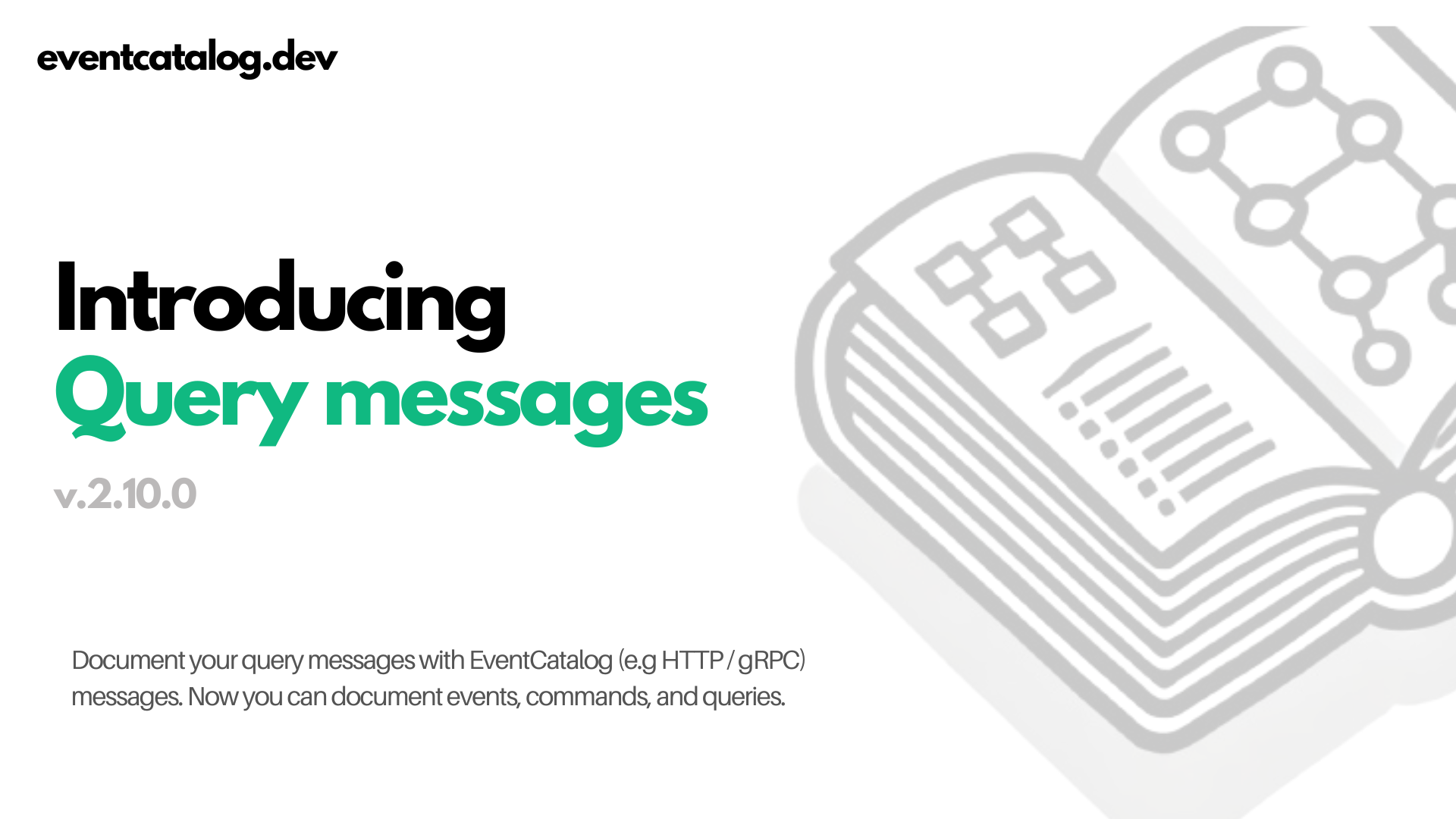Introducing query messages for EventCatalog
· 4 min read
 ;
;
Added in
eventcatalog@2.10.0In many distributed architectures, domains and services communicate through different types of messages, typically categorized as events, commands, and queries.
EventCatalog now includes support for documenting queries, allowing you to clearly outline which queries a service accepts and which it invokes. Queries are often seen in protocols such as HTTP and gRPC.